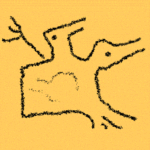 Despite increasing interest in inventorying of the rock art in the northern coastal area of Peru, only very little has been published by Peruvian scholars. In fact, several scholars said to publish inventories of – for example, Palamenco in Ancash and even of whole departments such as La Libertad – but nothing happens. This interim inventory about El Vagón (La Libertad) hopes to contribute to the digital safeguarding of important rock art that runs the risk to be vandalised or even destroyed.
Despite increasing interest in inventorying of the rock art in the northern coastal area of Peru, only very little has been published by Peruvian scholars. In fact, several scholars said to publish inventories of – for example, Palamenco in Ancash and even of whole departments such as La Libertad – but nothing happens. This interim inventory about El Vagón (La Libertad) hopes to contribute to the digital safeguarding of important rock art that runs the risk to be vandalised or even destroyed.
By Maarten van Hoek
*
The Rock Art of El Vagón
Moche Drainage, Peru
Maarten van Hoek – rockart@home.nl
INTRODUCTION
The northern coast of what is now the modern republic of Peru is very rich in rock art sites, mainly comprising petroglyphs. One of the most important concentrations of rock art sites in this coastal strip is found along the Huacapongo Corridor (Van Hoek 2018); an ancient route, parallel to the coast and only a short distance inland from the city of Trujillo and the town of Virú. This inland route was selected to avoid travelling through the harsh and very arid coastal desert and was marked by stretches of ancient roads, most likely built by the Cupisnique cultures, and many rock art sites, of which Alto de la Guitarra is the most important site. However, there are other rock art sites along this ancient route that hardly ever get any attention. One of those sites is El Vagón. The major goal of this study is to present an updated (2017) inventory of the rock art at El Vagón.
*
El Arte Rupestre de El Vagón
Cuenca de Moche, Perú
INTRODUCIÓN
La costa norte de lo que hoy es la república moderna del Perú es muy rica en sitios de arte rupestre, principalmente sitios con petroglifos. Una de las concentraciones más importantes de sitios de arte rupestre en esta franja costera se encuentra a lo largo del ‘Corredor de Huacapongo’; una ruta antigua, paralela a la costa y a poca distancia hacia el interior de la ciudad de Trujillo y el pueblo de Virú. Esta ruta fue seleccionada para evitar viajar a través del duro y árido desierto costero. La ruta interior estaba marcada por tramos de caminos antiguos, probablemente construidos por las culturas Cupisnique, y muchos sitios de arte rupestre, de los cuales Alto de la Guitarra es el sitio más importante. Sin embargo, hay otros sitios de arte rupestre a lo largo de esta antigua ruta que casi nunca reciben atención. Uno de esos sitios es El Vagón. El objetivo principal de este estudio es presentar un inventario actualizado (2017) del arte rupestre en El Vagón.
*
Previous Records
It is unknown to me who actually first discovered/reported the petroglyphs at El Vagón, but no doubt locals from the area knew of the rock art in the valley. The earliest scientific record that I could find is the work by Núñez Jiménez (1986) who included a section about El Vagón (1986: 335 – 344). Unfortunately, the records by Núñez Jiménez are often inaccurate and even incomplete (Van Hoek 2011a), also those of El Vagón, as only eight panels have been illustrated by him (not nine, as stated by Sharon, Briceño and Noack [2003: 113]). But the statistics by Núñez Jiménez are even more confusing, as I will demonstrate further on.
Indeed, the information by Núñez Jiménez is often rather confusing or even incorrect, for example when he writes that the rock art site of Alto de la Guitarra is located 28 km to the SE of El Vagón (1986: 335), while in fact Alto de la Guitarra is less than 6 km to the SSE of El Vagón. Moreover, Núñez Jiménez confuses ‘Sur’ (south) and ‘Norte’ (north) when describing the situation at El Vagón. Also the captions of the eight petroglyph boulders illustrated by Núñez Jiménez are most confusing and do not reveal much – if anything at all – about the exact locations of the rock art at El Vagón.
Unfortunately, after 1986 very little has actually been published about this interesting site, although its rock art is (just) mentioned in a few later publications (Sharon, Briceño and Noack 2003; Hostnig 2003: 203; Campana 2013; 2014: Lámina I). My wife Elles and I visited El Vagón several times in 2006 and 2008 and finally in 2017 and during those surveys we registered many more petroglyphs. One year later I published my book ‘The Huacapongo Corridor’ and included a short section about El Vagón (2018: 72 – 75).
Figure 1. Map showing the locations of El Vagón (green square), Alto de la Guitarra (yellow square) and some Virú rock art sites (red squares). Drawing © by Maarten van Hoek; map © by OpenStreetMap-Contributors.
The PDF available at ResearchGate will probably have better quality illustrations.
The Location of El Vagón
El Vagón is located on the west bank of the wide, dry valley of the Quebrada de las Guitarras and is found 3 km SE of the Río Moche; a major river which empties its waters into the Pacific Ocean further west. The site is found about 20 km NW inland from the Pacific Coastline at an altitude ranging from 270 m in the NNW to 335 m at its southern edge. The site actually comprises two different sections. The northern part is formed by a long ridge called Cerro del Vagón (stretching 850 m from NW to SE) with a more or less flat top tapering at both ends, while the southern section is an adjacent, flat, slightly undulating area (actually a thick alluvial deposit crossed by shallow gullies) between the ridge and the confluence of the Quebrada el Vagón and the Quebrada de las Guitarras (the latter is not the same as Quebrada Alto de las Guitarras, which is located 6 km to the SSE). The petroglyph boulders are found in both sections. Most likely culturally related to some of the petroglyphs are the remains of prehistoric (Cupisnique) roads that are an essential part of the Huacapongo Corridor (Van Hoek 2018).
Associated Archaeology
Although Colleen Marguerite Beck recorded several possible prehistoric roads in the El Vagón section of the valley (Beck 1979: Fig: 5; Sharon, Briceño and Noack 2003), there actually seem to have been two major roads that ran from (near) the Río Moche into the valley of the Quebrada de las Guitarras. The best preserved stretch of the first road in this valley runs directly NE of the ridge of Cerro del Vagón (Figures 2, 3 and 4). This fragment comprises a distinct double-road that once ran from near the ancient temple of Huaca de los Chinos (Campana Delgado 2014: Lámina I / H in Figure 2) to very near the rock art site of El Vagón on the west side of the valley. Somewhere near the Huaca two rock art sites once have been reported (but where exactly?): Pampa del Castillo (Núñez Jiménez 1986) and Huaca de los Chinos (Campana Delgado 2014: Lámina II-D – indicated by respectively P and H in Figure 2). The southern section is crossed by three ancient roads, the easternmost of which leads up to an alleged geoglyph and further up the ridge where it becomes a faint path.
Figure 2: Map of the rock art sites (all locations approximated) and ancient road fragments (yellow lines). Drawing © by Maarten van Hoek, based on Google Earth.
Figure 3: Map of the rock art sites (all locations approximated) and ancient road fragments near El Vagón in the Moche drainage. The numbers in brown indicate the number of petroglyph boulders at each site (86 being the total). Drawing © by Maarten van Hoek, based on Beck 1979: Fig: 5; in Sharon, Briceño and Noack (2003).
On the flat top of the ridge are the low walls of two ancient U-shapes structures that most likely served as windshields against the prevailing SW winds (similar constructions have been recorded in Chicama, further north). Just south of the southern end of the ridge is a double ring of stones, called a geoglyph by some researchers. I for one am not convinced of its age and therefore I recommend a scientific excavation to reveal more about this structure.
*
THE PETROGLYPHS
Our surveys at El Vagón revealed altogether 23 petroglyph boulders, all with lightly pecked images. Two of the 15 petroglyph boulders allegedly recorded ‘at El Vagón’ by Núñez Jiménez could not be traced by us after several intensive surveys on or near the ridge of Cerro del Vagón. They may have been stolen or could be located elsewhere. During our surveys no petroglyphs were registered by us in the dry valley west of Cerro del Vagón (however: absence of proof is no proof of absence). It is nevertheless always possible that petroglyph stones have been disturbed, removed, destroyed or covered-up by the builders of the numerous modern chicken-farms that occupy the lower valley, some date after 1986.
Importantly, during our surveys at El Vagón in 2006, 2008 and 2017 we recorded a minimum of 23 boulders with petroglyphs on this ridge and on the plain just south of the ridge. Altogether the area on and around the ridge has possibly up to 25 petroglyph boulders (two of which – VAG-001 and VAG-025 – we could never trace). Several of those boulders seem not to have been recorded before, although some of them might have been recorded by Núñez Jiménez, as in his El Vagón section (1986: 339 – 344) he only illustrates eight of the purported fifteen stones that he seems to have recorded; at least his eighth drawing – Fig. 566 – is labelled Piedra 15 (1986: 344).
In 2006 my wife Elles and I discovered four previously unknown petroglyph boulders at El Vagón (earlier grouped as El Vagón 1 by me; see Google Map [map not updated after 2014]). They were found on the flat area just south of the ridge and roughly 100 m SE of the (ancient?) geoglyph (?) consisting of two concentric rings of small boulders (marked in Figures 2 and 3; see also Figures 4 and 16). Only 100 m to the north of the alleged geoglyph there may be a second circular structure (another geoglyph?) near the top of the east slope of the ridge.
Figure 4: Map of the decorated boulders (all locations approximated) and ancient road at El Vagón. Drawing © by Maarten van Hoek, based on Google Earth.
Those four petroglyph boulders that we recorded in 2006 are located very near two (perhaps three) ancient roads (indicated with red/orange arrows in Figure 4; mind you: locations of all petroglyph boulders on this map are approximated) that both run to the SW side of Cerro del Vagón, two of them passing the ‘geoglyph’. The petroglyphs included a lizard-like zoomorph (typical for the region) on a boulder directly overlooking an (ancient?) path (see Figure 29), some damaged and faint lines, a single bird and – on an adjacent stone – a single anthropomorph. The latter two stones could not be re-traced in 2017 and may have been removed or disturbed by the severe El Niño of March 2017 that seriously eroded the valley and created a steeper escarpment to the south of the flat area.
In 2008 we recorded three other petroglyph boulders on the (slopes of) ridge (see Figure 4; again: locations of all boulders are approximated – earlier grouped as El Vagón 2 by me; see Google Map). In 2017 we were able to locate 16 other boulders with petroglyphs on and near the ridge. In this study all 25 decorated stones at this site are grouped together as El Vagón.
*
An Interim Inventory
This provisional inventory is mainly based on our surveys in 2006, 2008 and 2017 and for a very small part on the records by Núñez Jiménez (1986). As the numbering by Núñez Jiménez is inconsistent, I will use my own numbering system, in which each boulder will consecutively be labelled VAG-001, VAG-002 etc. When a boulder has more than one decorated panel, the letters A, B and C etc. will be added. The approximated locations of the boulders have been indicated in the map of Figure 4, but especially the locations of Boulders VAG-015 to 024 are only very roughly indicated.
VAG-001: Boulder VAG-001 – illustrated by Núñez Jiménez as Piedra 1 (1986: Fig. 557) and said by him to be ‘situado a 20 m al SSW del camino citado anteriormente’ – could never be located by us. However, the same stone is said by Cristóbal Campana Delgado to be located ‘cerca de Huaca de Chinos y del Camino ceremonial 1’ (2014: Lámina II-D), while his Lámina I locates El Vagón as follows: ‘En la parte baja de la colina denominada “El Vagón” (5) hay construcciones y petroglifos.’. Moreover, his (5) on the map marks a spot near the north point of the ridge. Also the arrow indicating the spot in the map by Núñez Jiménez (1986: Fig. 552) roughly points to the same area (but Núñez Jiménez is very sloppy regarding his arrows). Resuming, Piedra 1 (fortuitously marked as Piedra 1 in Figure 3) might have been located near the NW of the northern tip of the ridge, at a spot where a modern chicken-farm has been constructed.
Boulder VAG-001 has a number of anthropomorphic figures, some geometrics and two possible bird petroglyphs. One of the head-petroglyphs (yellow arrow in Figure 5) has the triangular ears that are characteristic – though rare – for the rock art in this coastal region (Van Hoek 2007: Fig. 15 and 2016: Fig. 18). The inset in Figure 5 shows the difference between the drawing by Antonio Núñez Jiménez and the interpretation by Cristóbal Campana Delgado of one of the petroglyphs (orange arrow).
Figure 5: The petroglyphs on Boulder VAG-001. Drawing © by Maarten van Hoek, based on Núñez Jiménez (1986: Fig. 557). Inset: the more correct interpretation by Cristóbal Campana Delgado (2005).
VAG-002: Remarkably Núñez Jiménez does not mention or illustrate any Piedra 2 in his records. However, it is certain that Piedra 3 (Núñez Jiménez 1986: Fig. 560) is located on the northernmost tip of Cerro del Vagón (at 270 m). Therefore, his Piedra 3 is re-labelled Boulder VAG-002 in this inventory. It definitely marks the entrance to the ridge. Our inspection of Boulder VAG-002 (Figure 6 and 6B) revealed that the drawing by Núñez Jiménez (Figure 6A) is incomplete. It concerns a group of (partially) parallel lines and some curls that might have been intended as a zoomorph. It may well depict an MSC-Style petroglyph.
Figure 6: The petroglyphs on Boulder VAG-002. Photograph © by Elles van Hoek.A: Drawing by Núñez Jiménez (1986: Fig. 560). B: Drawing © by Maarten van Hoek.
VAG-003: More than half a kilometre SE of Boulder VAG-002 and at the flat top of the ridge (at about 310 m) is Boulder VAG-003 (Figure 7) that has two decorated panels. South sloping Panel VAG-003A (listed and illustrated as Piedra 4 by Núñez Jiménez 1986) has a large petroglyph of a profile head that clearly has been executed in the ancient MSC-Style (Cupisnique), even though the eccentric eye and the fanged, agnatic mouth are absent. North facing Panel B (not recorded by Núñez Jiménez) has a rather large outlined, egg-shaped petroglyph enclosing a possible biomorphic motif. However, the whole is almost obliterated possibly by random pecking and weathering.
Figure 7: The petroglyphs on Boulder VAG-003. Photographs © by Maarten van Hoek. Inset: Drawing by Núñez Jiménez (1986: Fig. XXX).
VAG-004: About 150 m SE of Boulder VAG-001 is a boulder halfway near the top of the eastern slope of the ridge with – just below the top of its steeply SE sloping surface – a strange (unfinished?) outlined zoomorph (a bird?) and – lower down – a fully pecked anthropomorphic (?) petroglyph (Figure 8). Recorded for the first time by us in 2008 (See Google Map: El Vagón 2 / VAG2-001).
Figure 8: The petroglyphs on Boulder VAG-004. Photographs and drawing © by Maarten van Hoek.
VAG-005: This boulder is located in a small dry valley in the ridge and may have a faint and incomplete anthropomorphic (?) figure (Figure 9). Recorded for the first time by us in 2008 (See Google Map: El Vagón 2 / VAG2-002).
Figure 9: The petroglyph on Boulder VAG-005. Photograph © by Maarten van Hoek.
VAG-006: About 420 m further SE of Boulder VAG-005 and below the top of the ridge on its eastern slope is Boulder VAG-006, which has only one outlined bird petroglyph with an unusual rectangular body on its steeply SE sloping surface (Figure 10). Remarkably, it seems to have two heads with a dot for an eye in each head. Recorded for the first time by us in 2008 (See Google Map: El Vagón 2 / VAG2-003).
Figure 10: The petroglyph on Boulder VAG-006. Photograph and drawing © by Maarten van Hoek.
VAG-007: About 400 m SE of Boulder VAG-005 is a much fragmented, almost square boulder with a horizontal top. It is located on the flat upper part of the ridge and just east of its steep, eastern slope. It has three panels with anthropic markings (Figure 11). Vertical and NE facing Panel VAG-007A (Figures 12A, C and D) has a possible (unfinished?) biomorphic image (illustrated – slightly inaccurately – as Piedra 5 by Núñez Jiménez 1986: Fig. 562; Figure 12C). The much weathered upper surface – Panel VAG-007B; Figure 12B – has at least one large circle with centrally placed dot and a smaller S-shaped spiral that is characteristic for the region (both not recorded by Núñez Jiménez). There are possibly a few more anthropic markings on this panel; too faint to be recognised. A small, NW sloping panel – VAG-007C; see Figure 11 – has one line and some much fainter markings near it (also not recorded by Núñez Jiménez).
Figure 11: The petroglyphs on Boulder VAG-007 (notice the ugly pylon, absent in 2008). Photograph © by Maarten van Hoek.
Figure 12: The petroglyphs on Boulder VAG-007. A, B and D: Photographs and drawing © by Maarten van Hoek. C: Drawing by Núñez Jiménez (1986: Fig. 562).
VAG-008: Very close to Boulder VAG-007 – and accidentally exactly in line with VAG-007 and the pass (called El Portillo – seen in the distance about 5.5 km to the SE) leading across the mountain ridge to the rock art site of Alto de la Guitarra (see Figure 11) – is a much lower boulder with two panels (both not recorded by Núñez Jiménez). Panel VAG-008A (Figure 13) has one frontally depicted MSC-Style (Cupisnique) head with a long curved appendage from the top of the head and an associated (?) curved line that is also possibly (!) attached to the left side of the head. Panel VAG-008B has some very faint lines, some of which are almost circular.
Figure 13: The petroglyphs on Panel VAG-008A. Photograph © by Maarten van Hoek.
VAG-009: Just south of the ridge is a boulder with several panels that bear petroglyphs. Slightly sloping Panel VAG-009A has several petroglyphs, of which only one – a double cross of about 30 cm across of which six arms end in curls – has been illustrated (slightly incorrect) by Núñez Jiménez (Figure 14.A1). However, above the cross are a possible anthropomorphic (?) figure and two V-shaped lines, while to the right is a group of lines of uncertain character. Steeply sloping Panel VAG-009B has four V-shaped lines. The upper surface – Panel VAG-009C – has some faint lines, one group possibly depicting an unfinished head (?).
Figure 14: The petroglyphs on Boulder VAG-009. Photograph and drawing (A2) © by Maarten van Hoek. Drawing A1 by Núñez Jiménez (1986: Fig. 563)
This boulder – found about 30 m NE of the alleged geoglyph near the southern tip of Cerro del Vagón – was said by Núñez Jiménez to be ‘a 40 m al SSE de la 7’ (an indication which is meaningless since Piedra 7 was not illustrated by Núñez Jiménez). Importantly, one of the clearest petroglyphs of Panel VAG-009A – the exceptional double cross-shape with curved ends – is found almost exactly repeated on Panel QU4-001B at Queneto in Virú, some 32 km to the SSE; first discovered by my wife and me, also in 2008 (2018: Fig. 21).
VAG-010: Only a short distance to the south is Boulder VAG-010 (not recorded by Núñez Jiménez). Its upper surface – Panel VAG-010A – may have some faint lines near a large natural depression. Panel VAG-010B slopes steeply and has faint lines that may form a grid or some kind of rectangular motif. Adjacent is vertical Panel VAG-010C that has three petroglyphs, all of which may represent zoomorphs (two small birds and a lizard?). Panel VAG-010D is also steeply sloping and has a group of curvilinear lines.
Figure 15: The petroglyphs on Boulder VAG-010. Photographs © by Maarten van Hoek.
VAG-011: North of the purported ‘geoglyph’ (Figure 16) is a group of upright boulders close together (another anthropic – recent? – construction?), four of which bear petroglyphs (none recorded by Núñez Jiménez). Boulder VAG-011 has a complex group of curvilinear lines (an anthropomorph?) on its vertical, north facing surface that continue onto its domed top (Figure 17).
Figure 16: The purported ‘geoglyph’ and the boulders VAG-011 to 014. Photograph © by Elles van Hoek.
Figure 17: The petroglyphs on Boulder VAG-011. Photograph © by Maarten van Hoek.
VAG-012: Directly east of Boulder VAG-011 is another boulder -VAG-012 – that has a long (about 40 cm) double rake petroglyph crossed by a large arc on its vertical, NNE facing surface (Figure 18).
Figure 18: The petroglyphs on Boulder VAG-012. Photograph © by Maarten van Hoek.
VAG-013: About two meters further south is a damaged boulder – VAG-013 – with some very faint lines on its east facing, vertical surface (Figure 19).
Figure 19: The petroglyphs on Boulder VAG-013. Photograph © by Maarten van Hoek.
VAG-014: Adjacent to Boulder VAG-013 is Boulder-VAG-014 with a curvilinear group of lines on its steeply sloping south facing surface (Figure 20).
Figure 20: The petroglyphs on Boulder VAG-014. Photograph © by Maarten van Hoek.
VAG-015: Scattered about on the alluvial plain south of the purported ‘geoglyph’ are ten boulders with petroglyphs. Their exact location could not be established (we never use GPS) and therefore the locations on the map (Figure 21) are only approximated. On the flat, north sloping surface of Boulder VAG-015 is a probably unfinished S-shaped spiral and some more lines, one in a V-shape (not recorded by Núñez Jiménez).
Figure 21: The petroglyphs on Boulder VAG-015. Photographs © by Maarten van Hoek.
VAG-016: On the west sloping surface of Boulder VAG-016 is the isolated, rather distinct petroglyph of an outlined zoomorph, probably a frog (recorded by Núñez Jiménez 1986: Fig. 564) (Figure 22).
Figure 22: The petroglyph on Boulder VAG-016. Photograph © by Maarten van Hoek. Inset: Drawing by Núñez Jiménez (1986: Fig. 564).
VAG-017: One part of fragmented Boulder VAG-017 has some very faint curvilinear lines and a possible centrally placed dot (Figure 23). It may have been intended to depict a (now damaged) S-shaped spiral (not recorded by Núñez Jiménez).
Figure 23: The petroglyphs on Boulder VAG-017. Photograph © by Maarten van Hoek.
VAG-018: This large boulder has at least four decorated panels, only two of which have (slightly inaccurately and incompletely) been illustrated by Núñez Jiménez (1986: Fig. 565). The east facing and steeply sloping panel – VAG-018A – has a zoomorphic petroglyph depicted in profile with a long curved tail (Figure 24). Directly above the zoomorph are lines that seem to depict an outlined cross (not a monkey-like face). To the right of the zoomorph may possibly be an S-shaped spiral. Below the zoomorph is another – partially weathered-off – zoomorph or anthropomorph (a man-lizard?).
Figure 24: The petroglyphs on Boulder VAG-018. Photograph © by Maarten van Hoek.Inset: Drawing by Núñez Jiménez (1986: Fig. 565).
Above the possible cross is Panel VAG-018B forming a flat, slightly sloping part of the top with some rectilinear and curvilinear grooves (recorded by Núñez Jiménez). Steeply sloping and north facing Panel VAG-018C has some rectilinear lines partially enclosing a small, fully pecked biomorphic petroglyph, possibly a bird (Figure 25) and adjacent is vertical, west facing Panel VAG-018D with a number of curvilinear lines, two forming boxes with lines attached (Figure 26), both Panels C and D not recorded by Núñez Jiménez.
Figure 25: The petroglyphs on Panel VAG-018C. Photograph © by Maarten van Hoek.
Figure 26: The petroglyphs on Panel VAG-018D. Photograph © by Maarten van Hoek.
VAG-019: The flat upper surface of Boulder VAG-019 has two large rings (the smaller much clearer), a pecked dot and three much smaller circles, the one with a central dot again much more distinct (Figure 27). Not recorded by Núñez Jiménez.
Figure 27: The petroglyphs on Boulder VAG-019. Photograph © by Maarten van Hoek.
VAG-020: The steeply sloping, SE facing surface of Boulder VAG-020 has a faint petroglyph of a small zoomorph (a profile quadruped?) in front of which is a small circle (Figure 28). Not recorded by Núñez Jiménez.
Figure 28: The petroglyphs on Boulder VAG-020. Photographs © by Maarten van Hoek.
VAG-021: Boulder VAG-021 – has a large, vertically arranged, lizard-like petroglyph of about 48 in length on its steeply sloping, NW facing surface (Figure 29; notice the narrow path). It has a long tail (on two planes), a fully pecked triangular head, a fully pecked, diamond-shaped belly and fully pecked, triangular, wing-shaped front ‘legs’. This type of ‘lizard’ has also been recorded by us at Queneto in Virú. Recorded for the first time by us in 2006 (See Google Map: then labelled by me as El Vagón 1 / VAG1-001).
Figure 29: The petroglyph on Boulder VAG-021. Photograph © by Maarten van Hoek.
VAG-022: This low and flat boulder has several faint petroglyphs on its damaged upper surface. Best visible is a broken-off image of a circle and attached line (Figure 30). Other lines may include a cross and some indeterminate patterns. Recorded for the first time by us in 2006 (See Google Map: El Vagón 1 / VAG1-002).
Figure 30: The petroglyphs on Boulder VAG-022. Photograph © by Maarten van Hoek.
VAG-023: A large boulder – Boulder VAG-023 – has only one image on its vertical surface (Figure 31). It is a fully frontally depicted anthropomorph with short legs and simple feet, a triangular garment and a rectangular head with eyes, a mouth and ears (with earrings?). From the top of the head emerge two short, parallel lines with a small curl. Recorded for the first time by us in 2006 (See Google Map: El Vagón 1 / VAG1-003).
Figure 31: The petroglyphs on Boulders VAG-023 and 024 (no longer traceable in 2017). Photograph © by Maarten van Hoek.
VAG-024: Directly to the right of Boulder VAG-023 is Boulder VAG-024, also first discovered by us in 2006 (See Google Map: El Vagón 1 / VAG1-003). On its steeply sloping surface is the solitary petroglyph of a frontally depicted (except for the head), outlined bird (Figure 32). A similar bird petroglyph has been recorded by us on Boulder JUA-038 at Quebrada de San Juan.
Figure 32: The petroglyph on Boulder VAG-024. Photograph © by Maarten van Hoek.
VAG-025: Finally, Núñez Jiménez illustrates a petroglyph of an anthropomorphic figure on a boulder that he labelled Piedra 15 (Figure 33). During several searches we could not locate this stone. It may have been stolen, displaced or buried. It is also possible that the boulder is in fact not found at El Vagón at all (Núñez Jiménez sometimes erroneously includes drawings found at other sites in an entry; for instance the boulder illustrated by him as Figs 644 and 645 – said to be located at Alto de la Guitarra – is in fact found at Negro Goyo, only 970 m SE of El Vagón at the other side of the valley [for location see Figures 2 and 3]).
Figure 33: The petroglyph on Boulder VAG-025. Drawing by Núñez Jiménez (1986: Fig. 566).
*
CONCLUSIONS
The 23 petroglyph boulders recorded by us at El Vagón form an integral and important part of the rock art repertoire of the Huacapongo Corridor; the inland route, parallel to the coast, that connected the major east-west running valleys in the coastal strip of northern Peru. The petroglyphs include a variety of abstract designs, zoomorphic and anthropomorphic figures, some clearly belonging to the MSC-Style of the Formative Period. Those MSC-Style petroglyphs were probably executed by members of the Cupisnique cultures that once dominated the coastal areas of northern Peru and that later deeply influenced the overrated Chavín ‘Culture’ (I regard Chavín to be an – otherwise very influential – cult rather than a culture or a nation; see Van Hoek 2011b).
*
Acknowledgement
During all three surveys at El Vagón I was accompanied by my wife Elles. I thank her for her much appreciated assistance in the field and for her support at home.
*
REFERENCES
Beck, C. 1979. Ancient Roads on the North Coast of Peru. Ph.D. dissertation, U.C. Berkeley. Ann Arbor: UMT Dissertation Services.
Campana Delgado, C. 2005. La sal, el poder y los petroglifos del Alto de las Guitarras. In: Rupestreweb.
Campana Delgado, C. 2013. Una Serpiente y una Historia del Agua. Notas para un Estudio del Alto de Las Guitarras. Fondo Editorial de la Universidad Privada Antenor Orrego. Trujillo, Perú.
Campana Delgado, C. 2014. Arquitectura Temprana, Arte rupestre y Salinas en el valle de Moche. Estudio preparado para el Simposio: “Arqueología y Paisaje del Arte Rupestre Formativo en el Norte del Perú”. Ministerio de Cultura – Sala Paracas.
Hostnig, R. 2003. Arte rupestre del Perú. Inventario Nacional. CONCYTEC. Lima, Perú.
Sharon, D., J. Briceño and K. Noack. 2003. The “Temple” at Alto de la Guitarra Ravine, Perú. In: Rock Art Papers. Vol. 16; pp. 107 – 131.
Van Hoek, M. 2007. Petroglifos Chavinoides cerca de Tomabal, Valle de Virú, Perú. Boletín de SIARB. Vol. 21; pp. 76 – 88. La Paz, Bolivia.
Van Hoek, M. 2011a. Petroglyphs of Peru – Following the Footsteps of Antonio Núñez Jiménez. Oisterwijk, The Netherlands.
Van Hoek, M. 2011b. The Chavín Controversy – Rock Art from the Andean Formative Period. Oisterwijk, The Netherlands.
Van Hoek, M. 2016. Los Bordes Aserrados de las Rocas de Chuquillanqui, Perú / The Serrated Rock-edges of Chuquillanqui, Peru. In: TRACCE – On-line Rock Art Bulletin.
Van Hoek, M. 2018. The Huacapongo Corridor – Rock Art along a Prehistoric Coastal Route in the Desert Andes. Oisterwijk, The Netherlands. PDF.

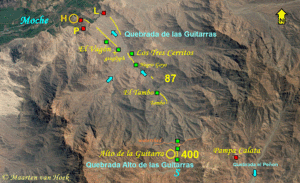
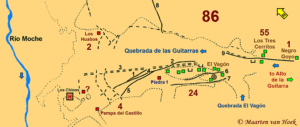
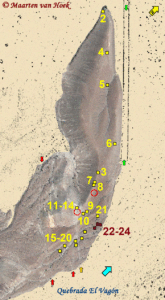

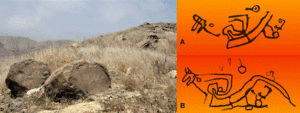
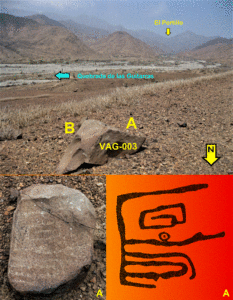

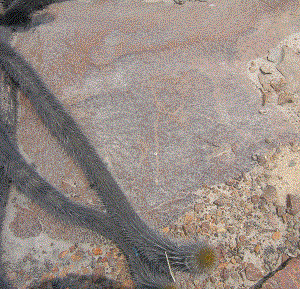
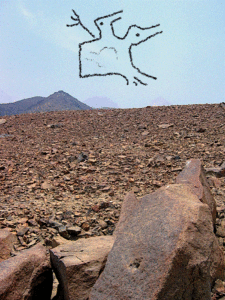
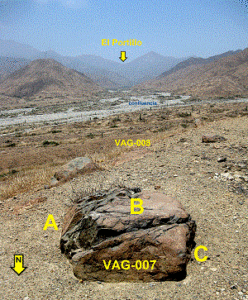
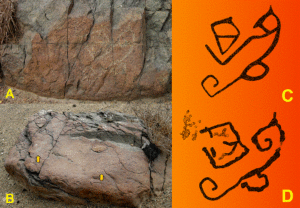
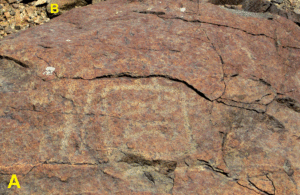


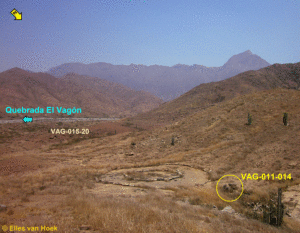

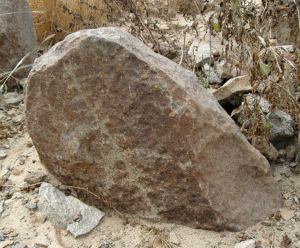
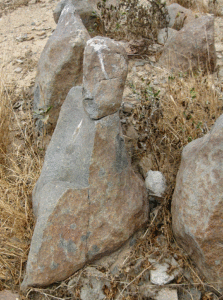
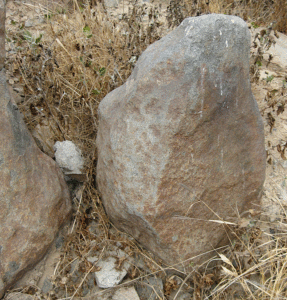
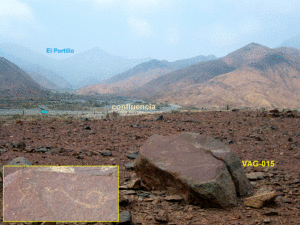
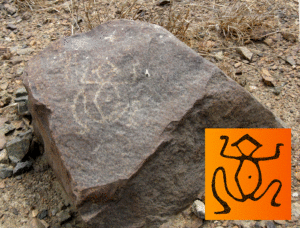

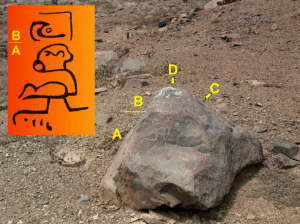
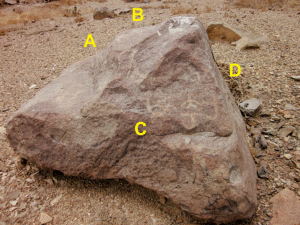
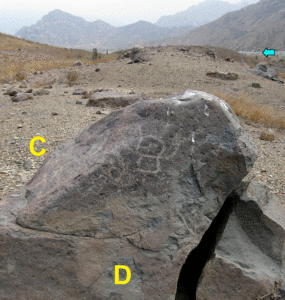
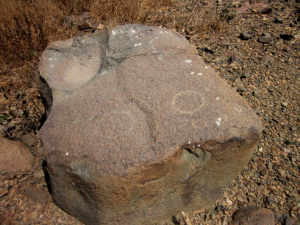
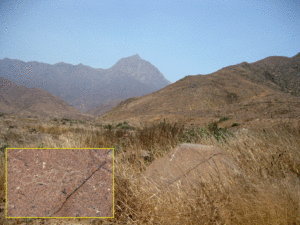
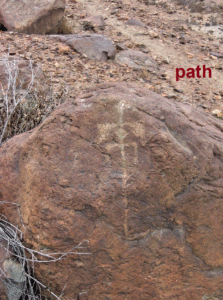
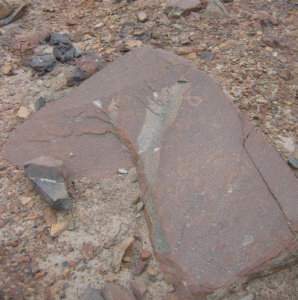
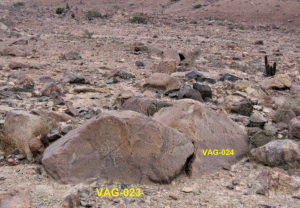
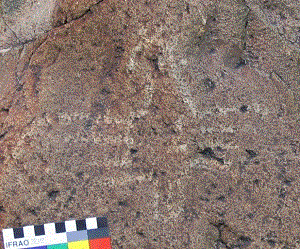
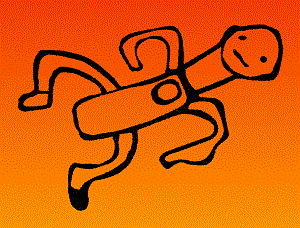
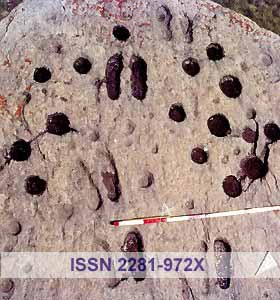













Leave a Reply